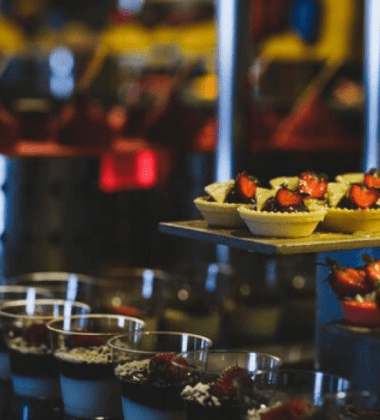Once upon a time, launching a food product was about instinct. A chef’s palate, a marketer’s hunch, a product manager’s inspiration. But in today’s hypercompetitive, rapidly shifting market, gut feelings aren’t enough.
Now, winning food and beverage brands are relying on data-driven trends—the real-time flavor preferences, purchasing behavior, and cultural cues that help turn what’s hot into what sells.
At the Global Products Expo USA (June 26–28, 2025), trend-forward companies aren’t just showcasing their products. They’re demonstrating how data intelligence shapes every stage—from flavor ideation to shelf strategy. This shift is helping brands de-risk innovation, accelerate time to market, and most importantly, delight customers with products that feel both new and right.
This article explores how to recognize, validate, and activate data-driven taste trends, and how the smartest companies are using consumer insight to drive bold but bankable flavor bets.
Why Flavor Forecasting Is Now Data Science
The difference between a viral food hit and a costly flop can be just a few weeks of timing—or a missed signal buried in a million posts or purchase logs.
Today, flavor doesn’t just emerge from kitchens. It’s mapped by:
- Social listening tools monitoring flavor mentions across regions and platforms
- Point-of-sale data identifying spikes in new ingredient pairings
- E-commerce and DTC feedback loops providing rapid consumer sentiment
- Behavioral data tracking how taste connects to moods, moments, or missions
These streams combine to form what we now call data-driven trends—not just educated guesses, but patterns backed by performance.
Where Are These Trends Coming From?
At expos like Global Products Expo, many attendees are surprised to discover how many stakeholders contribute to trend formation, including:
- Cultural shifts: Rising wellness movements, climate-conscious dining, or plant-forward living.
- Digital influence: What’s viral on TikTok today may be on shelves tomorrow (if you’re fast).
- Global fusion: Ingredients popular in one region quickly influence products worldwide.
- Lifestyle segmentation: Gen Z’s snack expectations differ radically from Boomers or Millennial parents.
The challenge? Connecting all this input into actionable product decisions.
Identifying the Right Signals (and Ignoring the Noise)
With so many sources of trend data, not everything is useful. Brands must focus on credible, converging signals—those validated across multiple channels.
Here’s how winning teams separate signal from noise:
1. Monitor Microtrends Before They Go Macro
Watch early-stage communities (Reddit food threads, indie culinary blogs, specialty chefs). If a flavor appears across distinct platforms, it’s moving.
2. Analyze Consumption vs. Conversation
Something that’s popular to talk about isn’t always popular to eat. Look for alignment between search interest, product sales, and repeat purchases.
3. Use Retail & Menu Intelligence
Emerging ingredients on restaurant menus often predict retail movement. Track appearance on menus across trendsetting cities.
4. Map Emotional Anchors
Understand how flavors make people feel: comfort, adventure, nostalgia, calm. These emotional ties fuel loyalty.
Examples of Data-Driven Trends That Worked
1. Ube & Purple Yam
Once a regional staple, it rose in social mentions (Instagram, TikTok) by 300% in 18 months. Brands that entered early (in ice cream, pastries, even protein bars) saw strong Gen Z engagement.
Why it worked: Beautiful color, perceived health benefits, nostalgia factor for diasporic communities.
2. Spicy + Sweet Crossovers
Flamin’ Hot Honey, chili-laced chocolate, spicy mango juice. These combos were once niche—now they’re mass. Data showed growing acceptance of heat in traditionally sweet categories.
Why it worked: Bold, sensory experience that taps both indulgence and adventure seekers.
3. Botanical Beverages
Floral, earthy, and herbal notes like lavender, rose, basil, or cardamom exploded in beverage launches. A crossover of wellness, naturalness, and flavor exploration.
Why it worked: Health perception, uniqueness, and synergy with mindfulness movements.
Turning Trends into Product Wins
It’s one thing to spot a trend. It’s another to turn it into a product that sells. Here’s how brands are doing it smartly.
Step 1: Run Controlled Experiments
At expos, offer two flavor options—one “safe,” one trend-forward. Track engagement, purchase intent, and feedback.
Step 2: Segment Your Trend Play
Not every trend suits every customer. Use your data to align trends with the right targets. For example:
- Fitness-focused? Protein drinks with adaptogenic spices.
- Luxury buyers? Premium truffles with saffron or matcha dust.
- Kids’ market? Natural colorants from dragon fruit or spirulina.
Step 3: Don’t Bet the Farm—Prototype First
Launch limited editions, seasonal drops, or DTC-only SKUs to test. Use this phase to optimize formulations and messaging before scaling.
Step 4: Build the Story Around the Data
Consumers trust brands that feel intentional. Use your trend data to back up your positioning. For instance:
“This blend was created after 4,200 Gen Z customers told us they wanted something relaxing, plant-based, and globally inspired.”
From Taste Buds to Shelf Space: Data’s Role in Distribution
Retail buyers are also leaning into trend data. If you can show that your flavor concept is backed by performance indicators—social metrics, trial success, or category momentum—you’ll find:
- Easier buyer conversations
- Faster acceptance into planograms
- Better in-store support (signage, sampling, etc.)
- Alignment with retail media strategies
Data isn’t just for R&D—it’s your sales asset.
Top Tools & Sources for Data-Driven Trend Spotting
If you’re not already using these, consider adding them to your toolbox:
- Tastewise – AI-powered food trend prediction platform
- SPINS and NielsenIQ – Retail consumption analytics
- Datassential – Menu and consumer flavor insights
- Google Trends + TikTok Creator Insights – Social sentiment snapshots
- Expo feedback platforms – Like QR-based flavor surveys or NFC-triggered review capture tools
Designing Your Expo Booth for Trend Validation
At Global Products Expo 2025, your booth can be more than an exhibit—it can be a live data lab.
Here’s how:
- Offer two-to-three experimental flavors
- Track interactions via QR codes or POS scans
- Use tablets or touchscreens for rapid feedback
- Include flavor “mood boards” for emotional mapping
- Incentivize participation with exclusive product access or swag
Pro tip: Present your booth not just as a place to taste, but a place to co-create the future.
Storytelling for Data-Driven Products
Once your trend-based product is ready, data still plays a critical role in marketing.
Your storytelling should:
- Show how you uncovered the need (“thousands of Gen Z snackers told us…”)
- Highlight performance (“Voted #1 in flavor at GPE 2025 by 89% of tasters”)
- Emphasize alignment with macro movements (e.g., “part of the growing global bitter-sour comeback”)
Consumers want to know why you created something. Let the data show your intention.
The Future of Flavor: Predictive + Responsive
We’re entering an era where flavor development is predictive—not reactive. With AI and machine learning, brands can now anticipate:
- What flavors will spike in six months
- Which segments will drive adoption
- How ingredients will cross-pollinate across categories
At the same time, consumer response is immediate and measurable. That creates a closed feedback loop that’s never existed before.
The result? Products that are not just trendy—but deeply resonant and relevant.
Final Thought: The Flavor Forecast is Clear
The food and beverage industry has officially entered the age of informed innovation. Instinct and artistry still matter—but now, they’re backed by hard evidence and real-time insight.
So as you prepare for the next expo—or your next launch—ask yourself:
- Are you chasing trends, or confirming them?
- Is your flavor story compelling, or provable?
- Are you using data as decoration—or as a decision engine?
Because in today’s market, the brands that win are those who turn every tasting note into a strategic move. They don’t just flavor the future. They forecast it.





